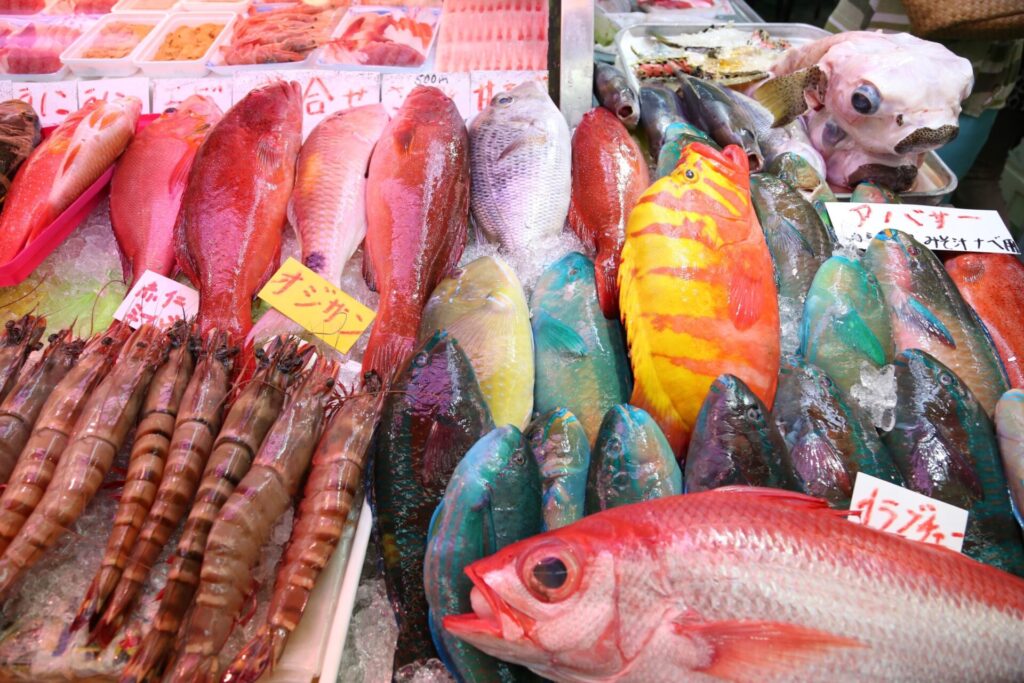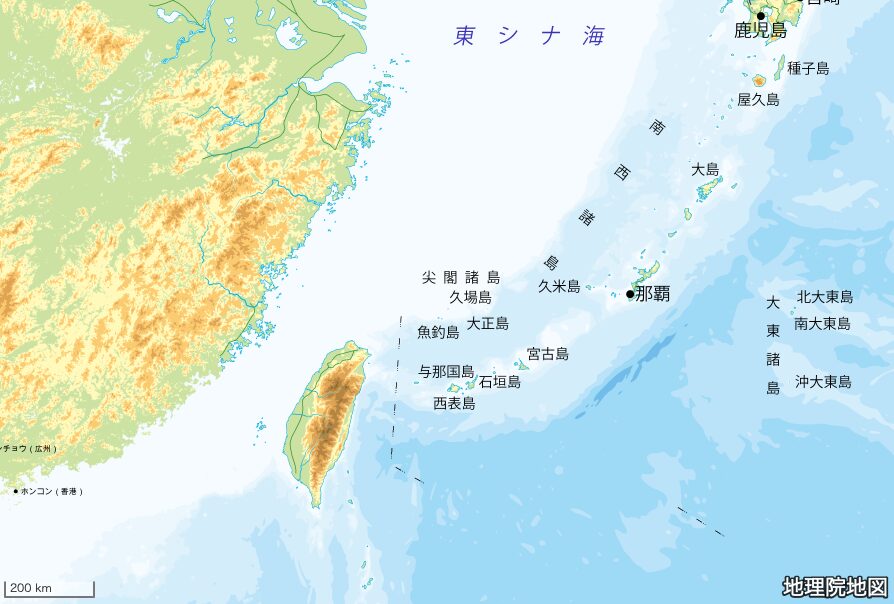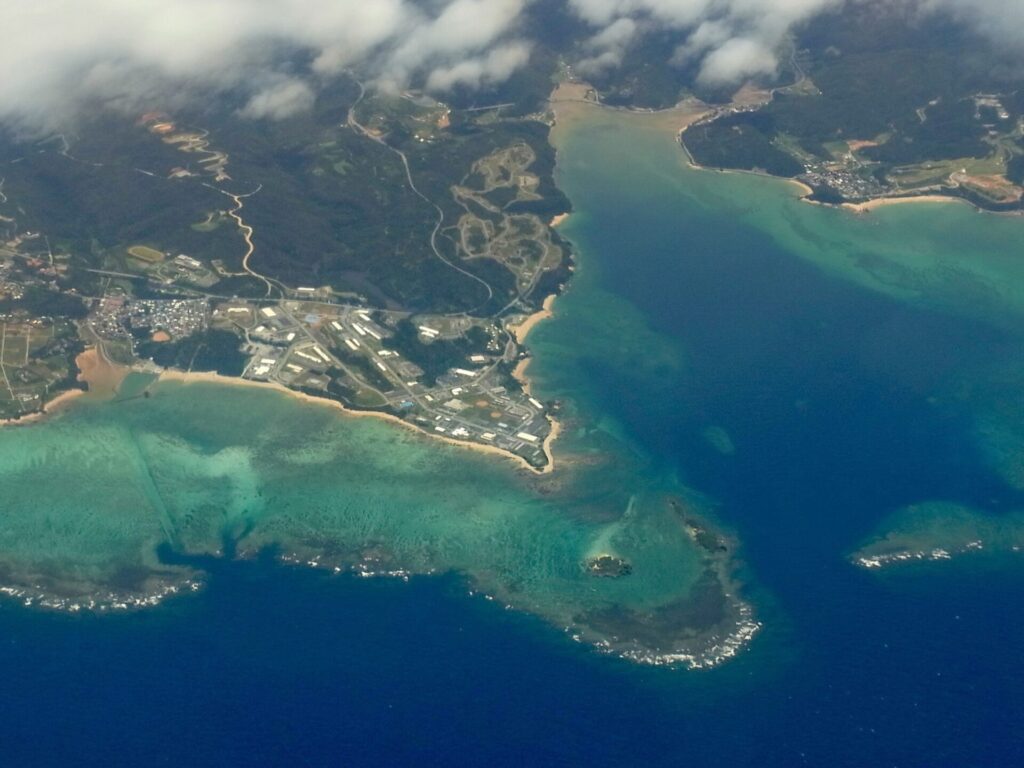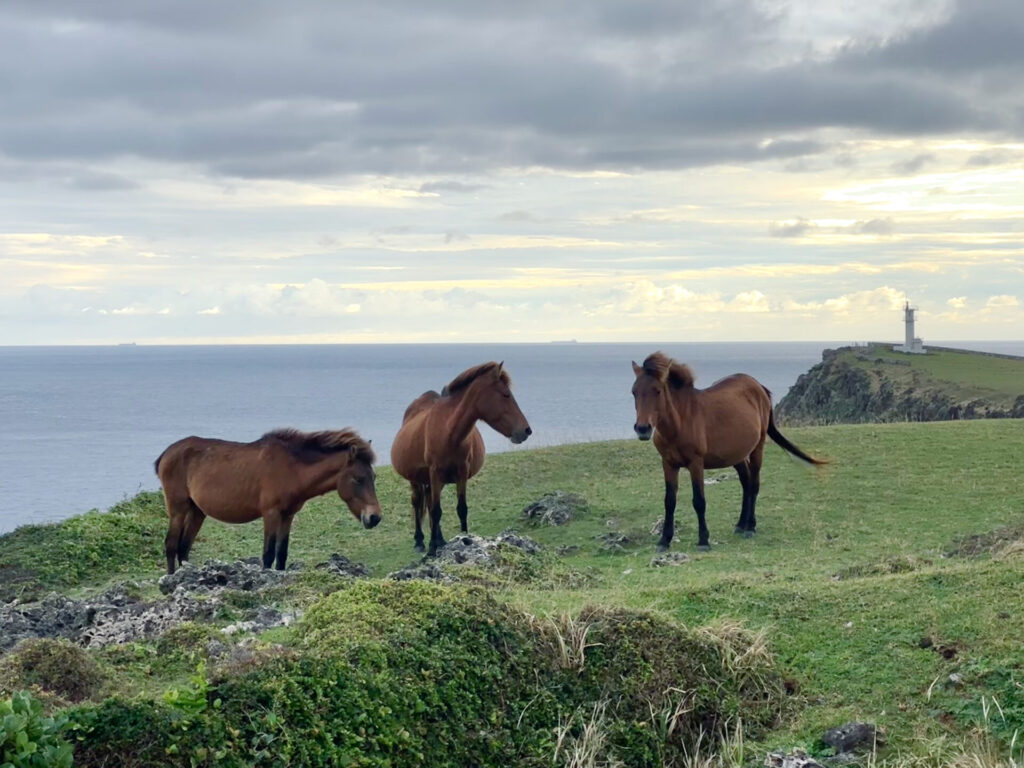Medaka (Rice Fish)

As its English name indicates, medaka (rice fish) is a popular freshwater fish that lives in and around rice paddies. The fish was classified as an endangered species in the Red Data Book issued by the Environment Agency (current Ministry of Environment) in 1999, with the sudden and unexpected news proving a surprise to many. The situation in Okinawa has also worsened, with rice fish sharply declining in number over the past few decades.
Separated from the sea, their limited natural habitats are easily affected by genetic mutations. Japanese rice fish can be categorized into two larger genetic groups, based on the northern and southern Japanese populations. The Okinawan rice fish is the “Ryukyu-type,” one of the smaller sub-populations (not a sub-species) of the southern population. In the Ryukyu Archipelago, they can be found on the islands of Amami and Okinawa. In the latter, records show that habitats were found on the main island of Okinawa, Tokashiki Island, and Kume Island (although they were not found there during a recent study).
Walking around the southern part of the island of Okinawa, people often tell me that they used to see a lot of medaka in the rice paddies and waterways, but they began to disappear in the 1960s. There were two reasons behind this. Firstly, they lost their habitats as the number of rice paddies and ponds decreased. In addition, waterways and rivers were paved with concrete, creating monotonous water flow and a challenging environment for water plants to survive and fish to lay eggs and grow. These changes happened all over Japan. Secondly, in Okinawa, the situation was worsened by the introduction of competing species from North America such as mosquitofish and guppies. They easily adapted themselves to the warm waters of Okinawa and drove the rice fish away. In simple terms, medaka were dealt a double blow in Okinawa.
A junior high school science teacher, born in the 1960s, told me that the rice fish bred in the learning center for teachers actually turned out to be mosquitofish. He had never seen wild rice fish and ended up mistaking guppies for them. The rice fish disappeared so quickly in Okinawa, replaced by mosquitofish and guppies without us even knowing it (some argue that the mosquitofish were also driven away by guppies).
If we consider the rice fish as an indicator of the freshwater environment, the changes surely affected other species as well. Tachihara Katsunori, who is investigating the distribution of freshwater fish in Okinawa, says there are only ten remaining rice fish habitats, mostly in the northern part of Okinawa Island. Even those environments are not ideal, so the fish are surviving with great difficulty. His research also says that they are almost completely gone from the southern and middle parts of the island, which were their original areas. “Rice fish are still fortunate as they are recognized as being endangered. There may be other species that have disappeared without us even knowing it.” He adds, “As they were on the Red List, their habitats may get devastated by the poachers, but it also helps to raise awareness among people to protect the fish.”
In 1996, Red Data Okinawa listed the rice fish as a vulnerable species1 (the category precedes critically endangered and extinct classifications).2 Among the Okinawan freshwater fish, there are no extinct species, two endangered species, six vulnerable species, and three rare species. Twenty-seven species are still not classified.3 Prompt investigation is needed to protect them.
Editor’s Note:
- In 2017 the fish was classified in the Endangered I category.
- Okinawa Red Data Book : https://www.okinawa-ikimono.com/reddata/index.html
- According to the 2017 list, there is one extinct, eighty-three critically endangered, ten endangered and thirty unclassified species of fish in Okinawa.








































































































































































































































